We would like to ask you about the early car drawings, which came out while you were a student at the Beaux-Arts, a school that was known to privilege drawing over any other forms of architectural representation. Instead of traditional drawings, you were already working in terms of technical drawing or a kind of fantasy of machines.
Francois Dallegret: I was originally quite shy as a student, but I eventually got out of it—my head was shaved and I was taken along Boulevard St-Michel naked. I went through the year of the life of student who was "brimé"—you know, punished all the time, which in a way got me out of my shell and then I started laughing.
While I was studying, I was spending half my time working in architectural offices, where I was using a Graphos pen, which was a German-made pen that used pure china ink. All the students used the Graphos pen, the pen of the century at the time. It was far better than a Rapidograph because the ink wasn't diluted. The line could be drawn very fine.
At the same time, I was crazy about cars and I had a Bugatti, a Type 57 Gangloff. But I was a student, so I couldn't afford to drive the car. So, instead, I started to draw these fantasies about automobiles, with cars that were of extraordinary lengths, with exaggerated wheels and engines. I didn't have any mechanical knowledge, but my drawings were very close to what was published at the time on automobile magazines, periodicals that I was basically invaded by. I wasn't looking at architectural magazines at all. But I was already looking at a kind of fantasy of a car—the Bugatti—so I wasn't trying to dissect typical cars in my drawings. I started to get published in automobile magazines. These drawings would take three months to do. I would do one drawing after the next; they were done totally outside of the Beaux Arts curriculum.
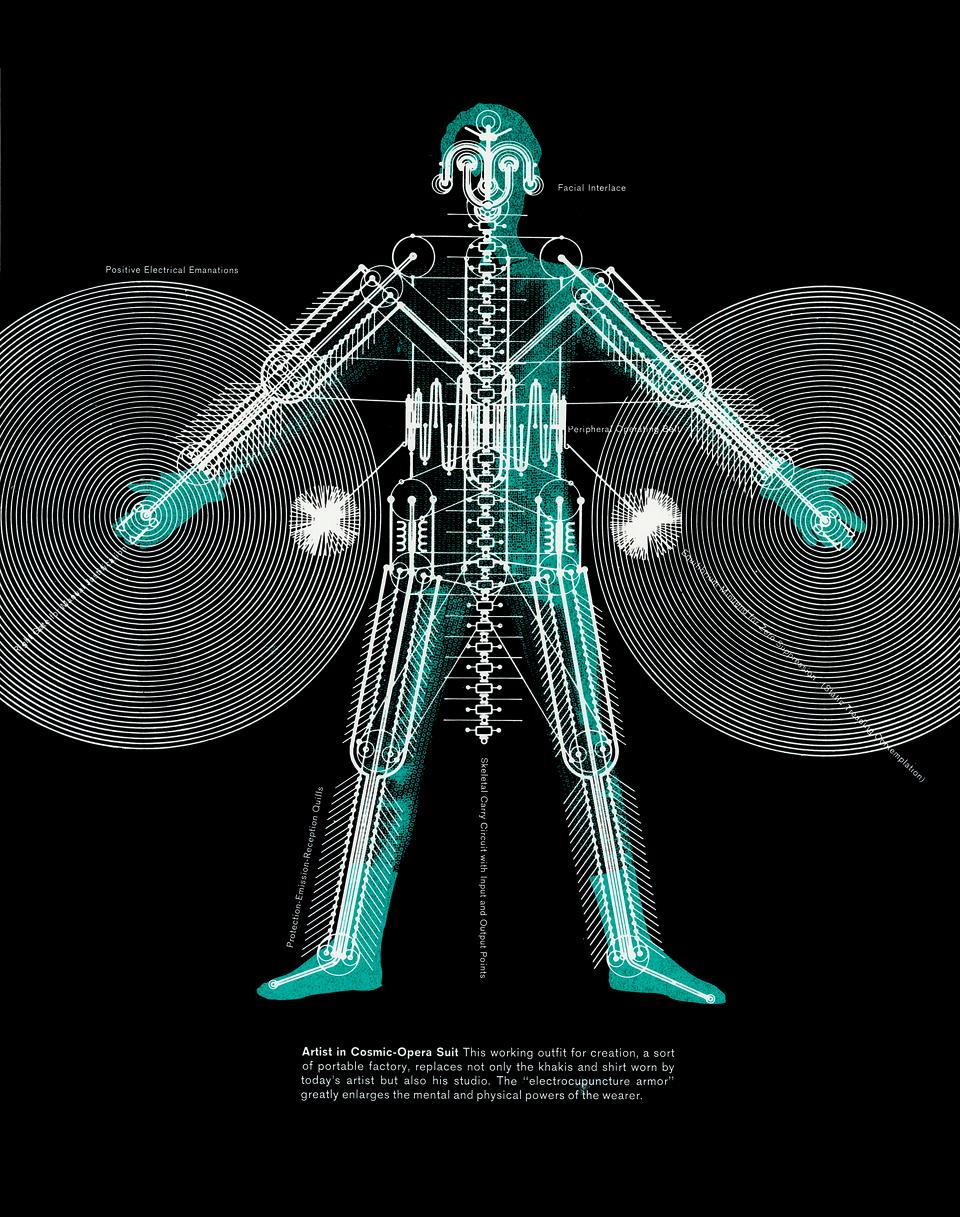
Above: Cosmic Opera Suite, published in Art in America, March-April 1966.
I left Paris and all its creepy folks...I was supposed to do my military service, but instead of the mandator two years I only did 15 days, during which they tried to reform me. It's a funny story... Well, with my friend Bernard Quentin, I sailed for the States in 1963 on board of Le France. I had no money at all when I arrived in New York. I moved to the Chelsea Hotel, which was incredible because it was the time of Pop Art, and things that I wasn't at all exposed to in Paris. In Paris, I was only exposed to the Groupe des Arts Visuels, people who were doing work that was influencing me. They were doing visual things, which were abstract, mechanical 3-dimensional structures, kinetic things. The also had a fantasy of drawings that I suppose you could say was also in my work or at least why I liked their work.
In New York, I had my work in a gallery and some things here and there, including MoMA. Eventually, I was exhibited alongside some Pop artists. Still, I was really working on my own in my room at the Chelsea Hotel, and I wasn't exposed to too many groups. I was mainly doing constructions from my old drawings—mainly doing film animations, or really trying to give a sense of idea of motion to the drawings by having one drawing move in front of the other with the use of motor, which made the drawing slide up or down on top of a copy. I guess it was my way of collaborating with all the "kinetic artists".
From New York, I came to Montreal, where I had a contact to perhaps work on Expo 67, but it was all very vague. I attended an art symposium on Mont Royal, where I was living in an old house, a police house, as soon as I arrived. The symposium was organised by Vaillancourt, Roussil and others, and I just went to look around. After 15 days in Montreal, I met Bill Sofin, a pharmacist, because a friend of his in New York gave me something to pass on to him. So we talked, and Sofin asked me what I did and so on. I told him I studied architecture and he said, "Oh that's great, very interesting, I'm opening a drugstore, and would you like to work on it?" I said, yes, I'd like to do the work, but I don't have anywhere to live, and he said, no problem, just live on the job site. Well, I lived on Mountain Street in an apartment above the future drugstore, and I did the design job and supervised the construction. I designed it in a week with a few sketches, and very few technical details; it took two months to build; et voila, Le Drug! The store was inserted into a long plan typical of the houses you find in Montreal. It was two levels: a top level that was the pharmacy, which was a kind of "hard-edge" space; and a lower level for the restaurant, which was a kind of grotto, a stalagmite and stalactite formation made of old tables wrapped in metal mesh and then sprayed with concrete, which were then sanded, painted white, and varnished. So, the place was soft on the bottom and hard on top….
In the back of Le Drug were a fashion boutique and Galerie Labo, which I managed. I showed Warhol, Lichtenstein, and others—the first time their series were shown in Montreal. The gallery was kind of like a home, a very small and personal space, and I managed to sell these pop art prints, such as Warhol's print of Elizabeth Taylor, for about 15 dollars apiece.
Le Drug stayed open for two years and then disappeared. Basically, they had a hard time to clean the restaurant and the brightly polished interior—the owner had to hire cleaners who spent too much time kneeling on the ground scrubbing with a brush and soap.
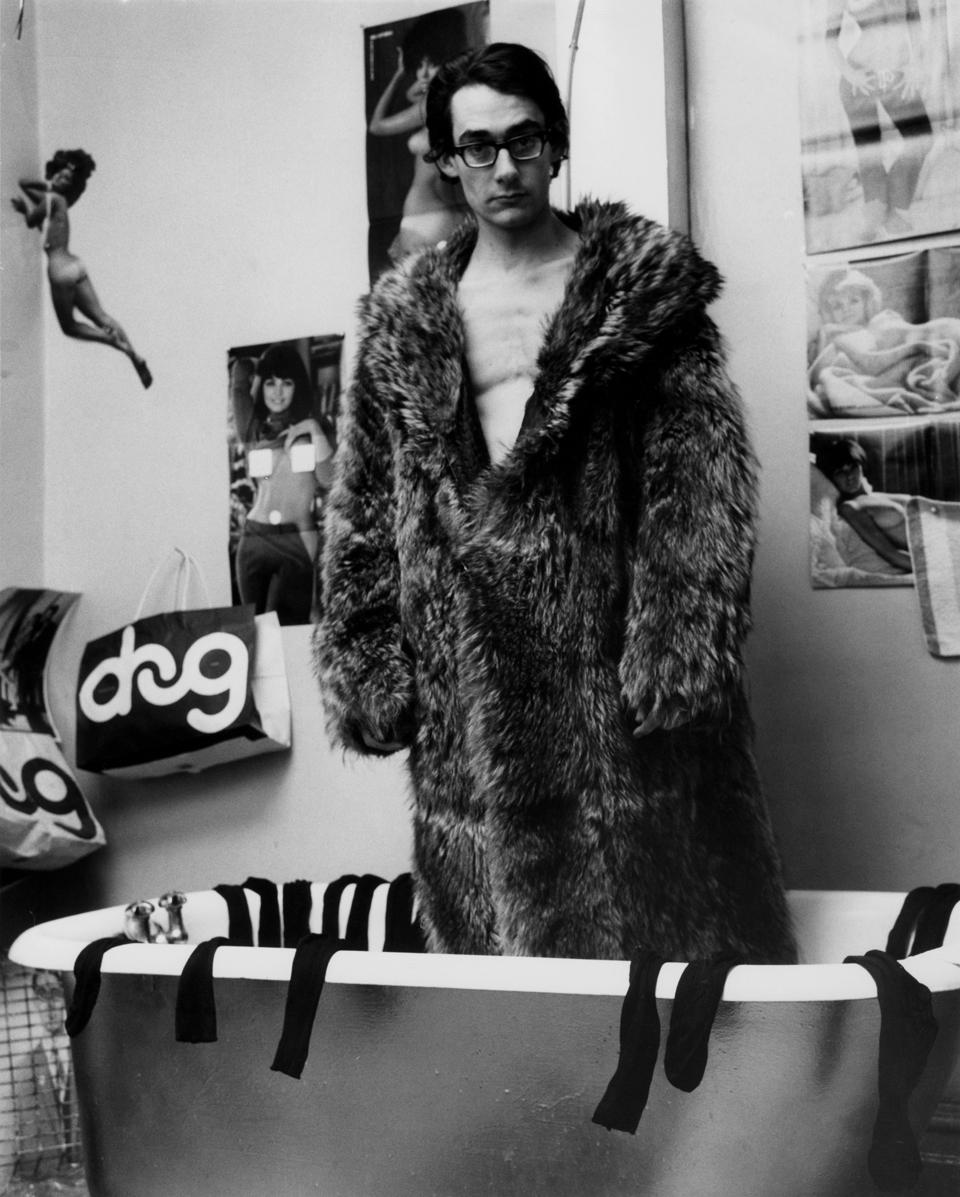
In a way, it started with Peter Blake, who published my drawing in Architectural Forum. I had sent Peter Blake a letter and some reproductions of my drawings while I was still living in Paris. I don't even know how I heard of the magazine—I guess that since I was going to New York I had got the information… Anyway, Peter Blake went crazy about my drawings and he published them, which really opened a door for me in New York because I was received by him and his circle with great "hooo and haaa". After that, I met someone at Esquire and then Art in America, and I made some articles for them. Ultimately, the Reyner Banham thing came up. I didn't know who Banham was and I had no idea at the time about the kinds of groups he was supporting, such as Archigram. I was totally in the blank—I was a big blank at the time, like now!
'Acid' meant 'Association Canadien Industial Designers'. Maybe I got inspired for the name by LSD. I got carried away….
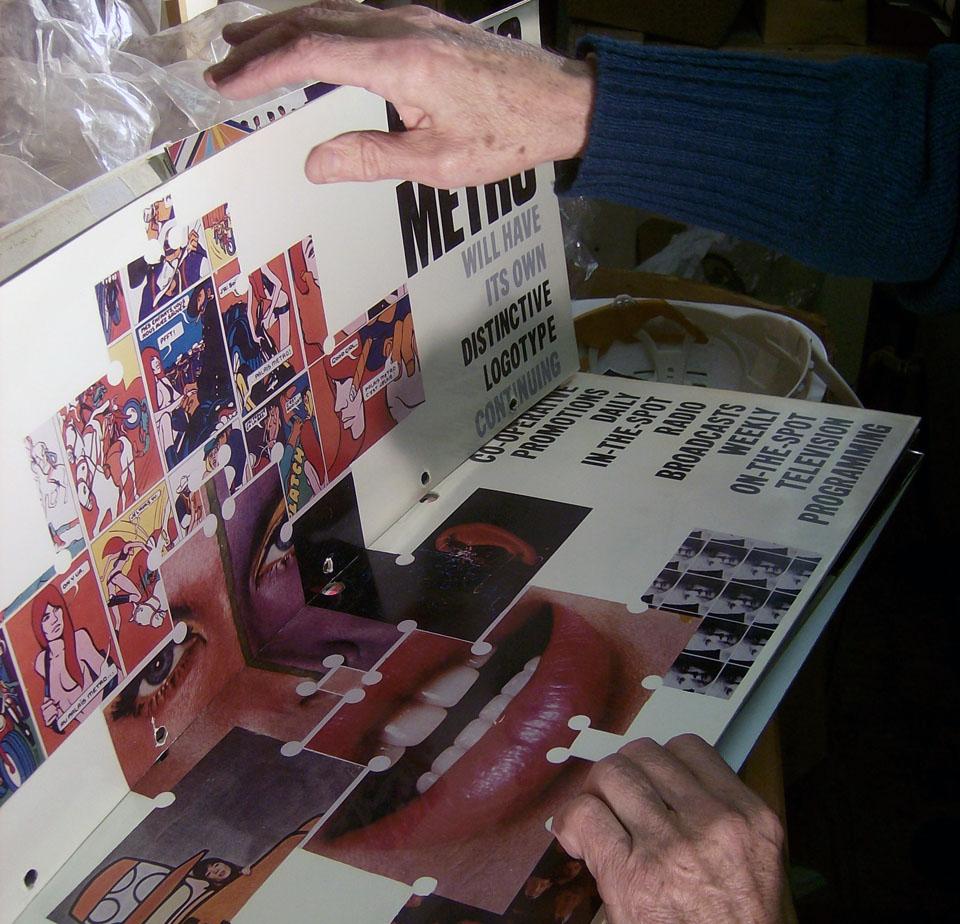
The car drawings really just expressed my interest in the automobile as such—in a way, the Introconversomatic was an extension of this. I just pumped these things out; there was no real idea to justify them. When the Art in America thing came up, it was the same thing—I must have read Banham's article and it inspired me. "A Home Is Not a House" was similar in a way to Introconversomatic because it was about a device or apparatus that you feed into.
So, I met Banham in New York through Art in America, and we talked about his article. I read his article, and then I did the six drawings, which took about three months. In a way, even if the drawings expressed a kind of idea about technology, they really needed his text to go along with them, so the two things worked together. I understood the text as being very clear about the body, so I decided that if you were going to live in a bubble you had to be completely naked. You didn't care about having a fancy suit or wearing a funny a tie because everything is already inside the bubble. While I was doing the drawings, I thought Banham would have to join me inside the bubble—but, he didn't want to pose naked! I asked for a photograph of him naked, but he said no—I don't know why, maybe it wasn't his religion. So, I took my body and simply put his head on top it. You can see that it's not a body like his! I guess he laughed about it—he was very relaxed.
Banham and I became good friends. He came to Expo '67 and stayed with me, and we stayed in touch until he died. In 1968, he invited me to the Aspen conference, where I met some really top-of-the-line folks, like Hans Hollein and Archigram. Again, I didn't know these guys or their work before I went—I was totally in a vapour, I wasn't very much "on" it (maybe I knew that Archigram projected this tower for Montreal). It turned out to be a very friendly, open, and relaxed environment, and of course it was summer. I did a presentation under the tent, a slide show of my stuff, including Le Drug and other images. But I was so shy that I asked them to turn off all the lights. People loved it—they responded to the fantasy and the fun in my drawings, the relaxed aspect of it. I did the Aspen Kit, the poster and graphics for the conference, which included a hat, and I sold the KiiK. The KiiK was a little "filler", shaped like dumbbell, to make you feel nice, excited, whatever. KiiK was around the same time as Hollein's Svobodair, which was about a kind of personal magic airflow. But KiiK was a bit different—you would carry it in your hand to feel good (or to feel terrible), or you could swallow it—which happened, actually: I remember this big, big girl, who told me she swallowed it! When I asked her, "Well what happened?" she laughed and said frankly, "Hee Hee, I got it back!" So I was relieved and told her that I was pleased that she didn't feel funny after that, and she replied, no, she was very, very excited and, voila… well, you know, people said that they used the KiiK bottle to do all kinds of things—it was your choice, put it in, whatever…
I used KiiK to do all kinds of design—the Dollar Bill, for example, which was published in Avant-Garde magazine.
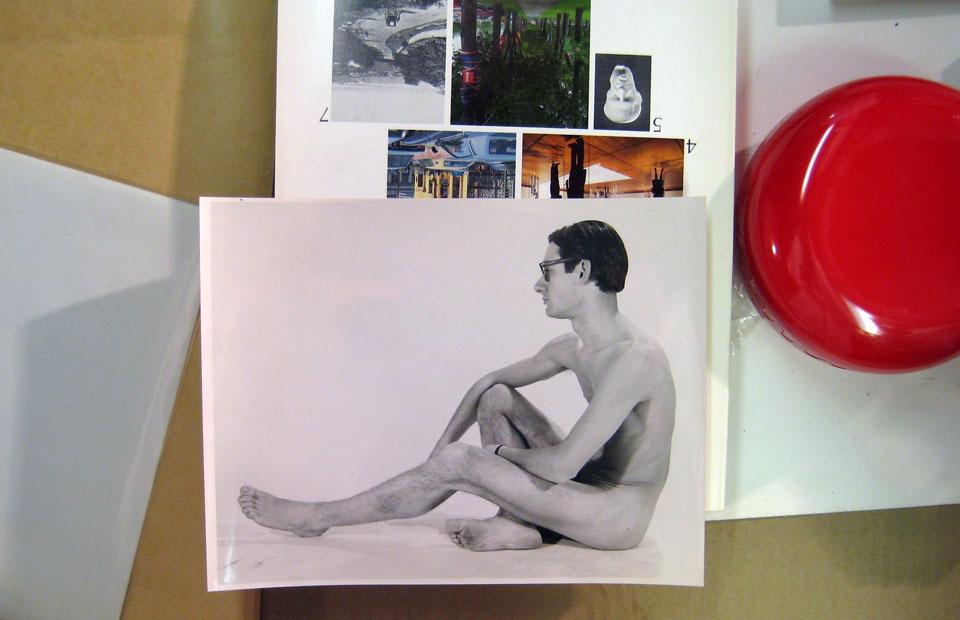
Well, Palais Metro was something completely different. It was in 1968, right after Expo '67. Concordia Estates, the developers behind Place Bonaventure, invited Joseph Baker and me to do a concept for the old Palais du Commerce, which was also the old rolling skating rink and meeting hall. Joe Baker and I had also collaborated on some Expo '67 things for La Ronde.
The idea behind Palais Metro was to do a temporary installation, with shops that could be stacked on top of each other, or come in or out of each other and be easily replaced. We wanted to introduce motion into the concept of shopping centre, which would then become a village made of fluorescents and pop graphics. So I designed a suitcase containing a tape recorder that would repeat the intended "ambience" of the place, with the noise of people hurrying around or laughing or shopping or whatever else. The suitcase was long and black, with panels of collages that showed the purpose of the project. Six or seven of these suitcases were put in the hands of salesmen who were to go around, with their pointy shoes, and sell the concept—except it didn't work out because right after Expo '67, everybody was tired and exhausted but mostly broke!
Joe Baker and I ended up building part of this project in Kansas City around 1972. It was the same concept except that we used angles for the structure and for all the cubicles. I don't remember how we got the commission—I think there was a friend of mine living in Kansas City and I somehow met the president of Hallmark Cards and I suppose I showed him Palais Metro. Hallmark had done the structure for their Crown Centre shopping mall, and there was a section called West Village where we built our version of Palais Metro.
Why did Banham put Palais Metro in his Megastructure book? He says it was the "best" megastructure…
I don't know why. I suppose I showed him what I was doing and he was interested in that stuff, but there is no other reason. I suppose it was part of the trend for shopping complexes, but Palais Metro was different because it was made of temporary things like scaffolding. In fact, in 1968 I did a discotheque in Montreal called New Penelope on Stanley Street, which was made of metal tubes for scaffolding—everything was made from this, benches and so on. I wasn't married then—I was with a girl, and there is a picture of us with the guys getting ready to play, a famous rock group...yes, it was Frank Zappa. At the time I didn't know who he was....
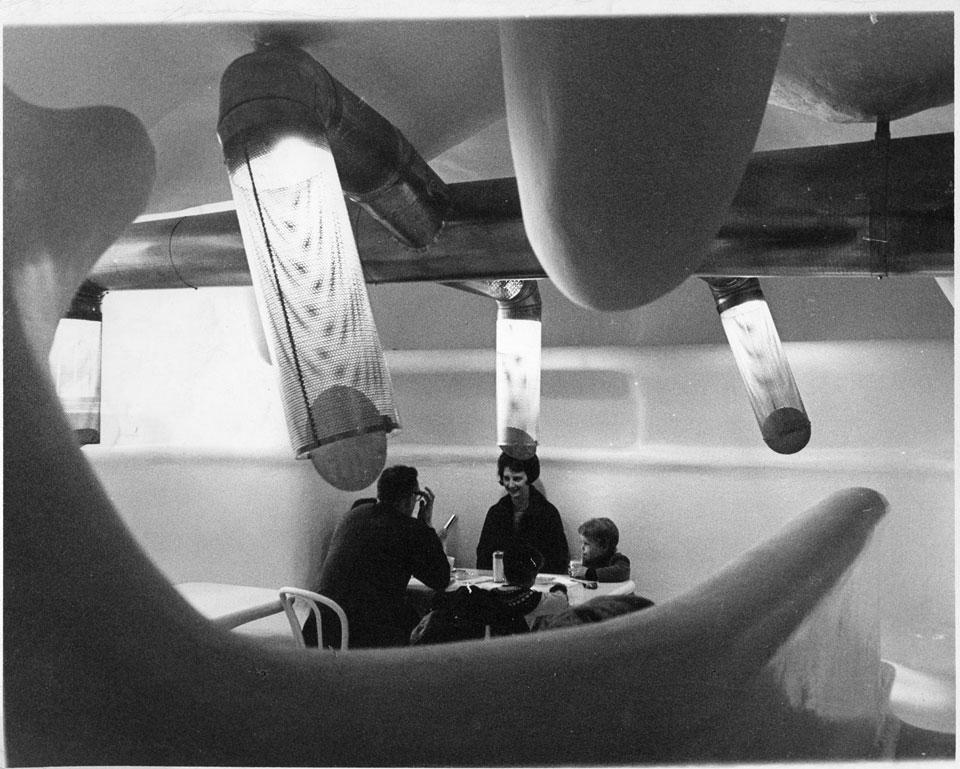
It came from New York, around 1965. I used to make self-inking rubber stamps that said "GOD", and I would go into the subway and—tap tap tap—put God all over the place. But "GOD" really meant "Go Dallegret!" Around the same time in the late sixties, I called myself "Aestheticien Acid". "Acid" meant "Association of Canadian Industrial Designers". Maybe I got inspired for the name by LSD. My letterhead was "God & Co.—Aestheticien Acid". I got carried away….
God & Co. was a design office. But I really wasn't doing industrial design—I was doing more limited numbers of objects. I did all these things like Kiik and Atomix, which I was mainly selling to the museum of Modern Art, and also La Machine and Tubula as part of God & Co. They weren't commissions; I just did them for myself and then tried to sell them afterwards. I really did very few commissions. It was a lot of fun—this was what was important: to have a ball. I had credit cards made out to God & Co. I don't think you could do this today, but people then really loved it, they dug it.
Once you start Artorium, you start moving away from the production of small or ephemeral objects and begin to work on site-specific or large-scale projects, almost infrastructural in nature. How did this transition come about?
Well, I was making these small objects to sell in places like MoMA, but things began to change—the buyer at MoMA changed, the conditions of work changed, so I got out of making small things to get into bigger things. When I was looking at small objects, there was no idea of scale. That's the idea of being trained as an architect—an architect can work at any scale. So it's just that the idea of scale changed with time, I suppose because of the market. So I switched to bigger things because it made more sense.
The Tour de 300 Metres project is from 1979. I always liked the Eiffel Tower. It is an incredible structure built in less than two years' time. I bought three sets of the books produced by Eiffel himself about his tower—he produced an edition of 500. They come in two folios—one of drawings, the other of text. I thought I could pull apart one of the sets and take out each page to display the plans and photographs on tables that I called "pylon tables", which had a base inspired by the bottom of transmission line towers but also looked like the base of the Eiffel Tower, of course.
The idea was to show a line of these tables displaying the drawings. I liked the finesse of Eiffel's drawings and the specification that went along with each one; I think people would have liked to see their magical quality.
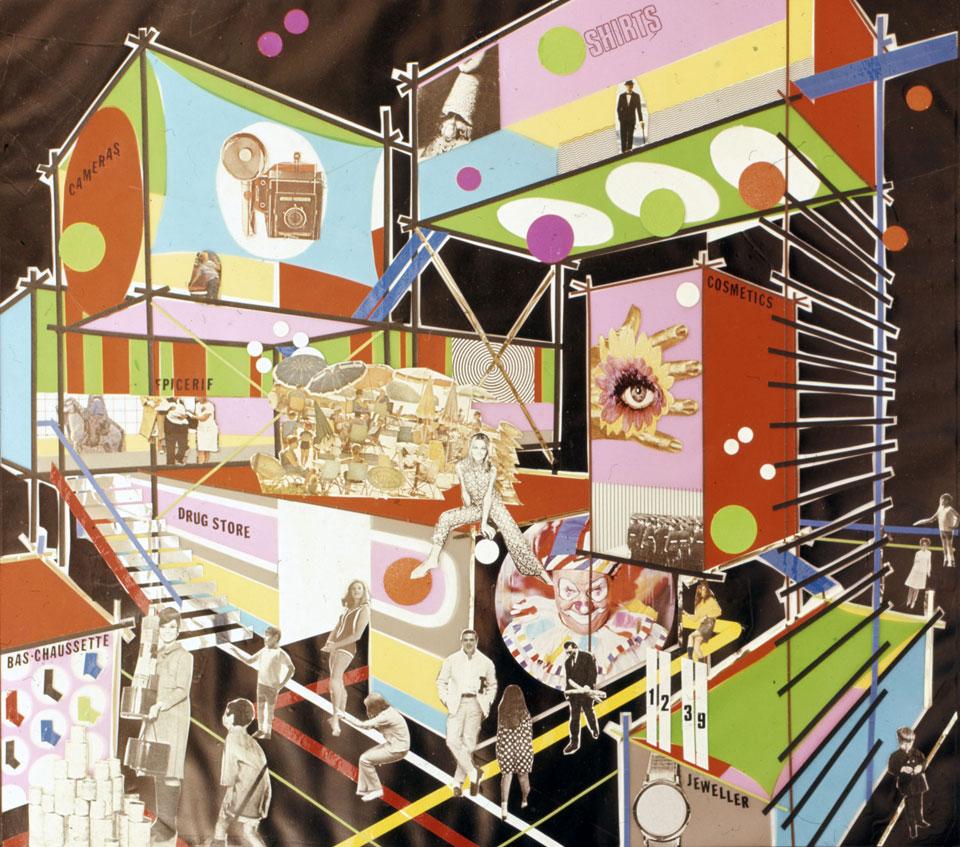
This is a project from 2001 that I did in Trelaze, which is near Angers. It is in an old but now abandoned slate quarry that exists since the Middle Ages—150 hectares of mountains of slate and lakes, a very weird and scary place. The field of slate is split by a road built about 10 years ago, so I wanted to mark that the road crosses this massive field with lights that stretch out across this field of slate where everything is asleep, where nothing is happening. I implanted two 11-metre high columns that were made specifically for the site, but they look like they were always there, like highway hardware. Each column had four lights on either side, and they transmit beams of lights according to the movement of passing cars. Unfortunately, the Philips lamps have a far wider cone than I wanted—I wanted a narrow, 10-degree cone of light, but instead it got to be wider. I was supposed to have it fixed….
Light has a kind of magical quality, you don't know if you saw it or not. But also light is the enemy of the environment with too many lights everywhere—like the Eiffel Tower, which is lit up by strobes, something I find ridiculous because it doesn't match the stature of the tower. It was much better before, when the Eiffel Tower was lit by lights whose source you couldn't, and they made the structure glow and come out in three-dimensional relief. Apparently, they are going to reduce the number of strobes because of the cost. Anyway, it's shame that the Eiffel Tower is destroyed by these strobes!


